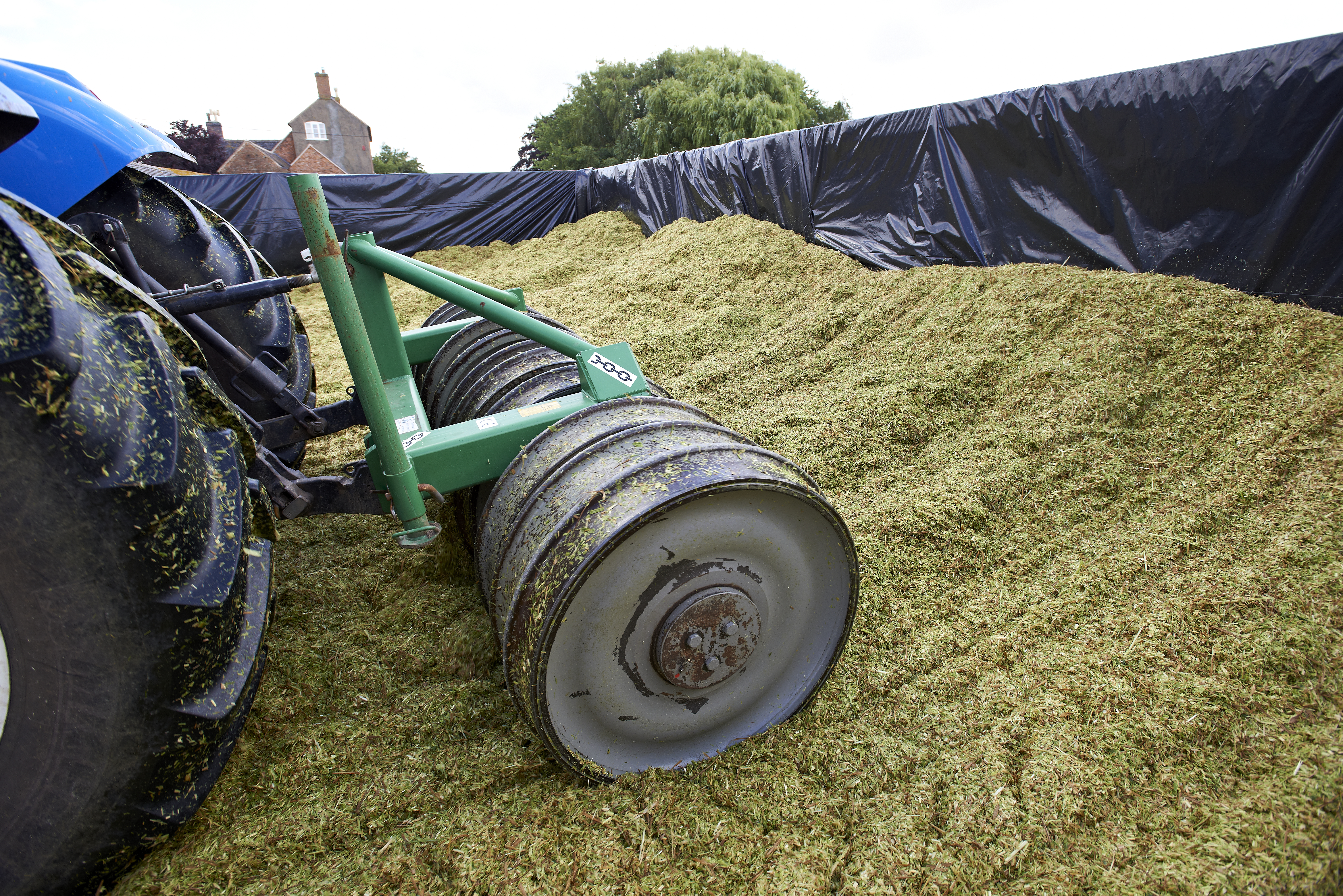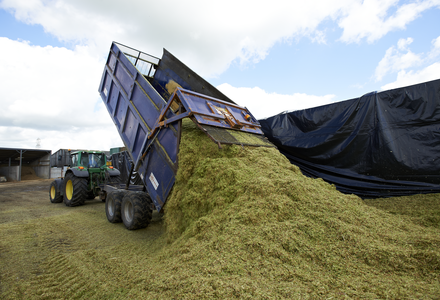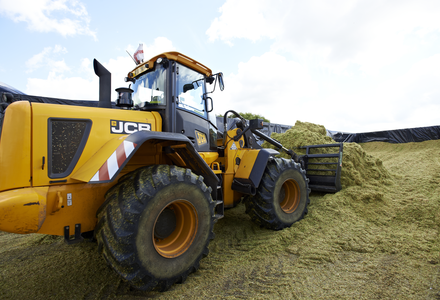How important is it to roll the clamp?
Good consolidation is probably the single most important step in silage making. It minimises the amount of air trapped in the silo initially which will mean wasteful aerobic processes will cease sooner, allowing fermentation to begin. Yeasts numbers will also be lower when the clamp is opened for feeding, reducing the risk of aerobic spoilage. Rolling will also bruise the forage a little, helping to release more sugars for fermentation.

With grass in excess of 27% DM fill the clamp quickly and in thin layers (maximum 6 inches / 15 cm). You need to be using plenty of weight on the silo; it is advised that packing tractor weight (tonnes) should equal the forage delivery rate (tonnes fresh weight/hour) x 0.25. You also need to use single wheels, not duals, which simply spread the weight over a bigger area, reducing the point pressure. Do not over-roll as the spongy nature of the grass will pump air in and out, providing more oxygen for respiration and heat production. Direct cut some wetter grass to seal the top before sheeting.
With grass below 20% DM, load with a steep ramp and take care not to over-roll. Use dual-wheel tractors or a crawler to load the clamp as excess contact pressure and rolling will increase effluent. Do not load the clamp too high or over-compress near the walls as wet grass exerts a greater pressure on the walls.
Do not roll the clamp for more than about 30 minutes in the evening. It is more important to get the sheet on as most of the trapped oxygen will get used up quickly and be replaced by carbon dioxide.
If filling over more than one day, do not roll immediately after uncovering the next morning as this will simply push out the carbon dioxide and replace it by oxygen. Only begin rolling after a new layer of grass has been placed in the clamp.

